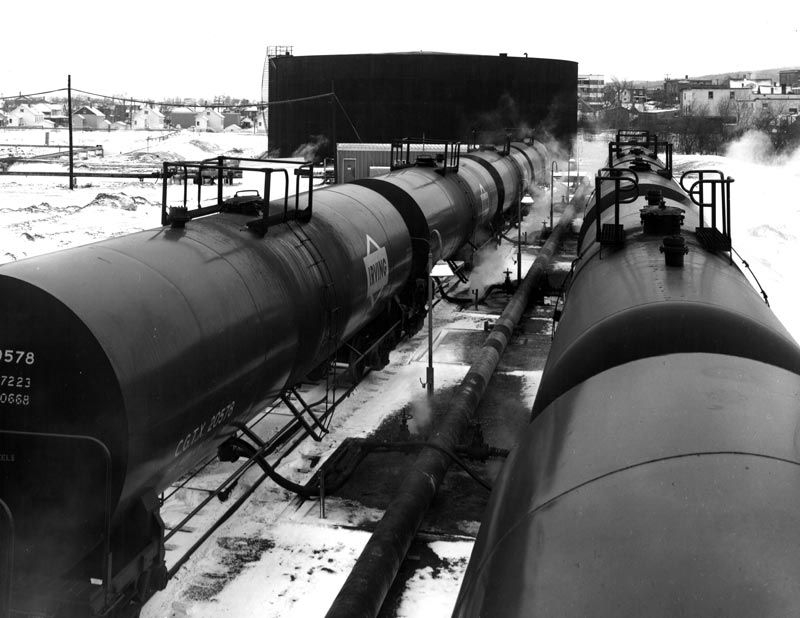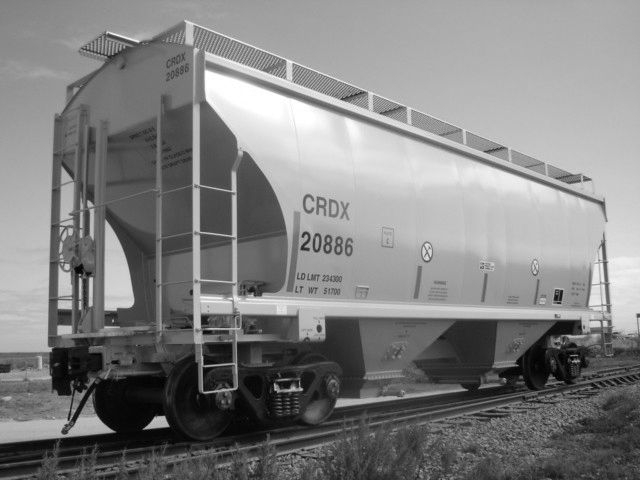Current Railcar Shortages: Predictable and Expected
September 27, 2012
This issue of rail cars and rotting wheat in 1979 got me thinking about capacity constraints in the current rail networks. My research shows that currently there are three different freight-car capacity supply issues in the US.
Moreover, while many of the operators and players affected by each of these market conditions are acting surprised, these shortages were predictable if you knew the conditions of the market and applied some critical thinking to the problem. In fact, I could go as far as to argue that each of these were investment opportunities, perhaps the kind a very smart investor made when his company bought up all the stock in one of the five remaining Class 1 railroads.
Automotive Carriers
Rail cars that were used to haul vehicles from the factory to distribution points started to create problems this spring for automakers in the South and Midwest. TTX Co., the car-leasing company that owns most of the double- and triple-deck rail car carriers, reported in mid-May that 81,470 vehicles sat at assembly plants awaiting shipping. The aggregate inventory the industry typically maintains at plant level for distribution is about 69,000 vehicles. Most shortages afflicted Midwest and Southern plant locations, and shortages were somewhat less of an issue for the West Coast ports that handle imports from Asia.
![TriLevel[2].jpg](/application/files/8314/9980/0494/TriLevel2.jpg) Tri-level auto rack cars are in tight supply, a product of a combination of greater demand for cars and the move by many Asian nameplates to move production to the US. Bi-level auto racks can carry 10 full-sized SUV and pickup trucks, while the tri-level cars carry 14 cars. While bi-level cars can carry automobiles, and are seeing service in that mode, they are less efficient.
Tri-level auto rack cars are in tight supply, a product of a combination of greater demand for cars and the move by many Asian nameplates to move production to the US. Bi-level auto racks can carry 10 full-sized SUV and pickup trucks, while the tri-level cars carry 14 cars. While bi-level cars can carry automobiles, and are seeing service in that mode, they are less efficient.
TTX owns most of the pool of auto rack cars. Some railroads, like CSX and BNSF, also own substantial fleets of auto racks. The railroads are increasing their supply. The automakers started to ramp up production to fill what they saw as increased consumer demand, which drove spot increases in demand for the auto rack cars.
The railroads and the automakers use the pool fleets provided by TTX to increase efficiency and access to equipment. Once the cars are empty, the railroads rout them to the closest plant that needs cars to load. An imbalance in supply and demand locations can create the current situation, where the demands for the cars are some distance from where the plants are.
The current fleet of auto carrier cars, and the management policies that TTX and the railroads used to manage the fleet, reflected the locations of auto assembly plants before the downturn. In the beginning of the financial crisis, the automakers closed a dozen automotive assembly plants. Since then, foreign automakers opened new plants—the newest is the Volkswagen plant in Chattanooga. These changes, along with the recovery, changed the network patterns for the supply and demand of the auto transport freight cars.
Now, you would expect that the company that holds the title to over half of the transport fleet would have modeled the changes the crisis would have on the network. But at this time, we don’t know, because TTX is not commenting on the issue. If TTX runs short of auto racks in an area, the automaker just has to wait for the empties.
While trucks deliver automobiles to the dealer lots, the economical mileage limit is about 150 miles. The costs for a truck to deliver automobiles greater distances climbs quickly as the distance grows beyond 150 miles. The automakers are frustrated because there is no cost-effective alternative to the railroads.
Oil Tank Cars

In 2010, more than 46,000 carloads of crude traveled the rails, a 57 percent increase over 2009. The demand continues to grow, and while the car makers continue to manufacture new tank cars, the industry expected a scarcity of cars until pipeline projects come online to link the oil fields to market.
Now, with the Keystone XL in limbo, the surge of crude on the rails continues.
Several companies built or are building rail terminals to support the Bakken and Eagle Ford fields. This gives suppliers the ability to ship the oil via unit trains to markets where oil prices are higher, such as Louisiana. Refiners and fuel shippers increasingly rely on the price difference between the crude delivered at Cushing and the higher global price to make a profit. Tesoro Corp. (TSO) uses a "pipeline on rails" that runs 120 rail cars of crude oil every other day from the Bakken Shale in North Dakota to its 120,000-barrel-a-day refinery in Anacortes, Washington.
The sudden crude oil railcar demand outstripped supply. Union Tank Car Company, one of the major manufacturers of rail cars, leased out its entire hazardous material railcar fleet to haul crude and has a "sizeable" production backlog. As tank car supply dwindles, and demand increases, tank car providers hiked their rates. In 2010, tank car lease prices doubled from 2008, reaching about $1,000 a month per car for five-year leases. The timing of the demand, with the growth of corn ethanol as a fuel and the new shale oil discoveries, fits into the timing of this increase.
Heavy Weight Open and Closed Hoppers for Sand
The new oil and natural gas drilling technique of hydraulic fracturing uses an immense amount of sand and other proppants to open up the rock. A typical well in Pennsylvania’s Marcellus Shale region uses about 7 million pounds of sand. That sand, more than enough to cover a U.S. football field a foot deep, takes about 35 hoppers to deliver.

In fact, the demand is so much greater than the supply, that some of the sand and other proppants are imported via ocean container from Asia. These shipments are bringing a pool of ocean containers to the Dakotas that are a welcome sight for farmers in the region, who are using the containers to export their products.


